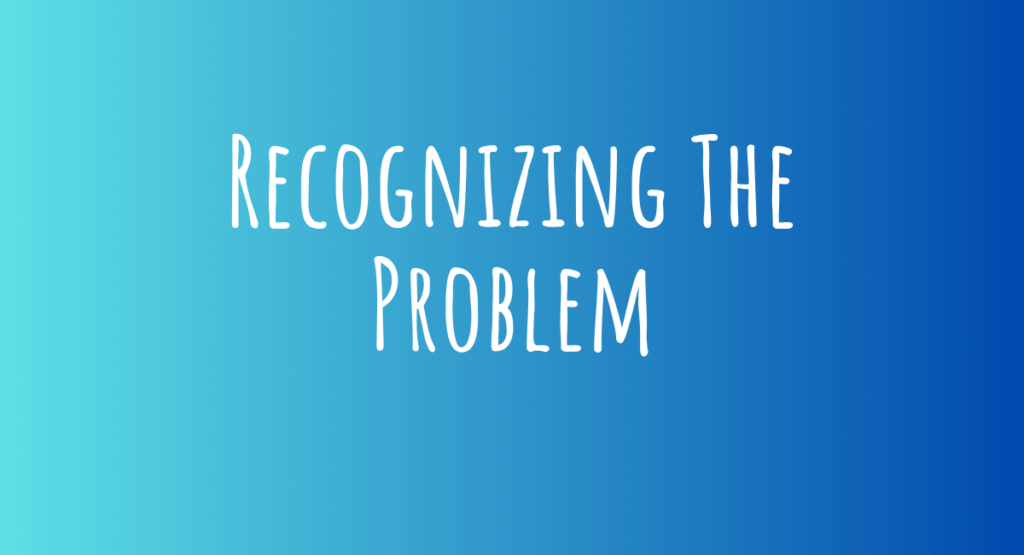When someone asks “What’s wrong?” It is best to be honest and express your feelings or concerns, rather than brush it off with a flippant response.
It is important to communicate openly and effectively, providing an opportunity for meaningful conversation and support.
30 General Answer What’s Wrong

1. “Nothing, just lost in thought.”
2. “Just having a bit of a challenging day, but I’ll get through it.”
3. “I’m dealing with some personal stuff, but thanks for asking.”
4. “Feeling a bit overwhelmed, but it’s nothing I can’t handle.”
5. “Just a rough day – you know how it goes.”
6. “Not much, just working through some emotions right now.”
7. “I appreciate your concern; it’s just been a tough week for me.”
8. “Nothing specific, just feeling a bit off today.”
9. “Just a case of the Monday blues, I suppose.”
10. “Dealing with a few issues, but I’ll be okay.”
11. “It’s been a challenging time, but I’ll bounce back.”
12. “Thanks for asking; I’m just working through some personal stuff.”
13. “Nothing major, just feeling a bit down at the moment.”
14. “Just one of those days where everything seems a bit overwhelming.”
15. “I’ll be alright; just going through a rough patch.”
16. “Nothing’s wrong; I’m just not myself today.”
17. “Just a little stressed, but it’s nothing I can’t handle.”
18. “I appreciate your concern; I’m just in a bit of a funk right now.”
19. “Nothing specific – just need some time to sort through my thoughts.”
20. “Just feeling a bit low, but your support means a lot.”
21. “No need to worry, just feeling a bit out of sorts.”
22. “Just processing some things in my mind; it’s nothing you did.”
23. “Thanks for asking, I’m just navigating through a challenging moment.”
24. “Nothing’s wrong with you; I’m just dealing with some personal issues.”
25. “Just a bit tired and drained, but it’s nothing permanent.”
26. “It’s just a minor setback; I’ll be back on track soon.”
27. “Appreciate your concern; just grappling with some emotions right now.”
28. “No major issues, just trying to find my balance.”
29. “Just a bit frustrated, but I’ll figure things out.”
30. “Nothing’s wrong, I’m just having one of those reflective moments.”
Casual Response What’s Wrong?
Here are 10 casual responses to “What’s wrong?”:
1. “Oh, nothing serious. Just having one of those days, you know?”
2. “Nothing major, just dealing with a bit of a rough patch.”
3. “Not much, just feeling a bit off today. It happens!”
4. “Eh, just navigating through a minor hiccup. No biggie.”
5. “Just the usual ups and downs. How about you?”
6. “Nothing too dramatic, just a little under the weather emotionally.”
7. “Not a whole lot, just trying to shake off a funky mood.”
8. “Just a bit out of sorts, but it’s nothing I can’t handle.”
9. “No big deal, just dealing with some minor frustrations.”
10. “Just the usual rollercoaster of life – nothing too surprising.”
Polite Response What’s Wrong?
Here are 10 polite responses to “What’s wrong?”:
1. “Thank you for asking. I’m just dealing with a few challenges at the moment.”
2. “I appreciate your concern. I’m going through a bit of a rough patch, but I’ll be okay.”
3. “I’m touched that you care. It’s just some personal stuff I’m working through right now.”
4. “I’m grateful for your concern. Nothing too serious, just navigating through some difficulties.”
5. “I appreciate your kindness. There’s nothing major, just a few things on my mind.”
6. “Thank you for asking. I’m experiencing a bit of stress, but I’m handling it the best I can.”
7. “Your concern means a lot. I’m just facing a few challenges that I need to figure out.”
8. “I’m okay, thank you for asking. Just going through a bit of a tough time lately.”
9. “I appreciate your consideration. It’s nothing serious, just some personal issues to work through.”
10. “Thank you for checking in. I’m dealing with some minor difficulties, but your support means a lot.”
Friendly Response What’s Wrong?
Here are 10 friendly responses to “What’s wrong?”:
1. “Hey, thanks for asking. Just going through a bit of a rough patch, but I’ll be alright.”
2. “I appreciate your concern! Just dealing with some stuff, you know how it goes.”
3. “Thanks for checking in! Nothing major, just navigating through a few challenges right now.”
4. “I’m good, just wrestling with a few things. Your kindness means a lot.”
5. “Hey, I’m okay, just a bit off today. Your friendly inquiry made me feel better though!”
6. “Thanks for asking! It’s nothing serious, just the usual ups and downs of life.”
7. “I appreciate your concern! Dealing with a few things, but your support makes a difference.”
8. “Hey, thanks for being so caring. Just working through some minor issues, nothing to worry about.”
9. “I’m alright, just a little overwhelmed at the moment. Your friendship helps a lot.”
10. “Thanks for checking on me! Just a few hiccups, but your positive energy is lifting my spirits.”
Recognizing The Problem

Before you can begin to address any issue, it’s crucial to recognize the problem at hand. This step involves identifying the issue and acknowledging the challenge it poses.
Identifying The Issue
Identifying the issue entails understanding the specific problem at hand. It can be helpful to assess the symptoms or signs that indicate something is wrong and to pinpoint the root cause.
Acknowledging The Challenge
Acknowledging the challenge involves accepting that there is indeed a problem that needs to be addressed. It requires a willingness to confront the issue head-on and a readiness to seek a resolution.
Understanding The Causes
When it comes to understanding the causes of a problem, it is crucial to dig deeper and explore the root of the issue as well as the factors contributing to it. By doing so, we can gain valuable insights that will help us find effective solutions and prevent similar problems in the future.
Root Of The Problem
Identifying the root cause of a problem is essential for addressing it effectively. Without understanding the underlying cause, we may only be treating the symptoms, leading to temporary solutions or recurring issues. To determine the root of the problem, it is important to analyze the situation meticulously and identify the factors that initiated the issue.
Factors Contributing To The Issue
Once we have identified the root cause, it is crucial to explore the factors that have been contributing to the problem. These factors can vary depending on the situation, context, and the nature of the issue at hand. By identifying and understanding these contributing factors, we can gain a comprehensive view of the problem and develop a targeted plan for resolving it.
Some common factors that contribute to issues include:
- Lack of communication: Inadequate or ineffective communication can lead to misunderstandings, conflicts, and the exacerbation of existing problems.
- Poor organizational structure: A disorganized or inefficient structure within an organization can hinder productivity, collaboration, and overall problem-solving capabilities.
- Lack of resources: Insufficient resources, whether it’s financial, human, or technological, can impede progress and limit the ability to effectively address and resolve problems.
- Inadequate planning and preparation: Failing to plan or prepare adequately can lead to unforeseen challenges and setbacks, making it difficult to overcome issues efficiently.
By identifying and understanding these contributing factors, we can develop targeted strategies to address them and prevent the recurrence of similar problems in the future.
Developing Solutions
When someone asks “What’s wrong? “, it’s best to respond honestly or express that you don’t want to talk about it. It’s important not to get upset or dismissive, as it may deter them from offering support. Remember, they are likely asking out of concern.
Finding Effective Responses
When confronted with the question, “What’s wrong?”, it’s important to be prepared to provide an answer that is both effective and honest. This can be a challenging situation, as you may not always want to disclose personal information or reveal your true emotions. However, finding a response that acknowledges the concern and allows you to maintain your boundaries is crucial. Here are a few effective ways to respond:
- Redirect the conversation: If you’re not comfortable sharing the details, it’s perfectly acceptable to redirect the conversation. You can say something like, “I appreciate your concern, but I prefer not to talk about it at the moment. Let’s focus on something positive instead.”
- Provide a vague response: Another option is to provide a simple, vague response that doesn’t disclose much. For example, you can say, “I’m dealing with some personal challenges, but I’m working through them.” This allows you to acknowledge that something is going on without delving into the specifics.
Creating A Plan Of Action
Once you’ve found an effective response, it’s important to create a plan of action for handling future situations. This will help you maintain your boundaries while still addressing people’s concerns. Here are some steps to consider:
- Reflect on your needs: Take the time to reflect on what you’re comfortable sharing and what you’d like to keep private. This will help you establish clear boundaries for yourself.
- Practice your response: Practice responding to the question in a way that feels authentic yet protective. This will help you feel more confident and prepared when confronted.
- Establish support systems: Surround yourself with a supportive network of friends, family, or professionals who you can turn to when you need someone to talk to. Having a strong support system can make it easier to handle these situations.
Implementing Change
Implementing change is a crucial aspect of addressing and resolving issues effectively. It requires a strategic approach and a willingness to adapt to new solutions. Undertaking proactive steps and making necessary adjustments can lead to tangible improvements and sustainable outcomes. Let’s explore the essential elements of implementing change in handling challenging situations.
Taking Action Steps
When faced with issues, taking action is vital to initiate a positive transformation. Proactive measures such as identifying the root cause, seeking feedback from stakeholders, and formulating a well-defined plan are essential. Embracing a problem-solving mindset and communicating effectively with the relevant parties play a pivotal role in implementing change.
Making Necessary Adjustments
In the process of implementing change, making necessary adjustments is integral to achieving favorable results. This involves evaluating the current methods, identifying areas for improvement, and adopting innovative strategies. Flexibility and openness to change are imperative in making the required adjustments to address underlying issues effectively.
Evaluating The Outcome
After addressing the underlying issues and implementing the necessary changes, it is crucial to evaluate the outcome. This allows us to gauge the effectiveness of our solutions and determine if any further adjustments are required. In this section, we will explore two key aspects of evaluating the outcome: Assessing the Impact and Measuring Progress.
Assessing The Impact
Assessing the impact of our efforts is essential to understand the extent to which our actions have influenced the situation. This evaluation provides valuable insights for future decision-making and enables us to fine-tune our approach. When assessing the impact, consider the following:
- The overall goals that were set at the beginning of the intervention
- The specific metrics used to measure success
- The degree of improvement or change observed
- The feedback received from stakeholders or affected parties
By objectively analyzing these factors, we can gain a comprehensive understanding of the impact and effectiveness of our actions. This assessment enables us to identify areas of success and areas that may require further attention.
Measuring Progress
In addition to assessing the impact, it is crucial to measure progress throughout the intervention process. Measuring progress allows us to track the development of the situation and determine if we are moving in the right direction. Consider the following strategies when measuring progress:
- Set clear, measurable milestones that align with the overall goals
- Regularly collect and analyze relevant data related to the issue
- Compare current findings to the baseline data collected before the intervention
- Engage with stakeholders to gather feedback on the perceived progress
These strategies ensure that progress is not only measured objectively but also takes into account the perspectives and experiences of those affected. By regularly measuring progress, we can make informed decisions and adjustments as needed, improving the overall outcome.
Frequently Asked Questions Of What’s Wrong How To Answer
What To Say If Someone Asks What’s Wrong?
If someone asks what’s wrong, you can say, “I don’t want to talk about it” or “Nothing, I’m fine. ” Avoid being flippant or upset.
How To Reply To What Is Wrong With You?
If someone asks you what is wrong, you can reply with “I’m sorry, did you say something? ” Or ask why they are asking. Remember, everyone interprets things differently, so what may be wrong for one person might be normal for another.
What Can I Say Instead Of What’s Wrong?
Instead of asking “What’s wrong? “, you can say: – “Are you okay? Is something bothering you? ” – “Is everything alright? You seem upset or troubled. ” – “Can you tell me what’s going on? I’m here to listen. ” – “Is there something on your mind?
You seem different today. ” – “I’ve noticed a change in your behavior. Is everything alright? “
Why Do People Ask Me What’s Wrong?
People ask what’s wrong if they notice a change in your behavior or demeanor. They are expressing concern and offering support.
Conclusion
Understanding how to respond when someone asks, “What’s wrong? ” Can be crucial in social interactions. By showing empathy and offering support, you can help create a more positive and understanding environment. Remember to express genuine concern and be a supportive listener when someone seems troubled.
Ultimately, communication and empathy are key in navigating these situations effectively.






